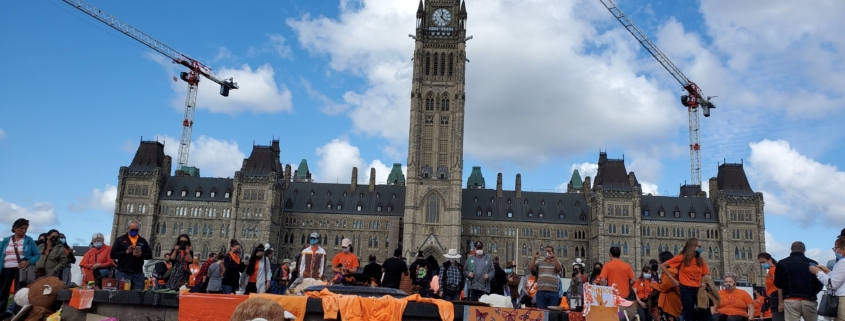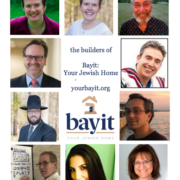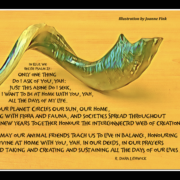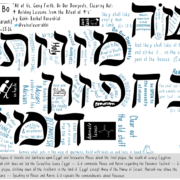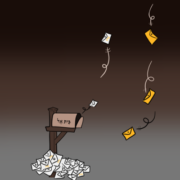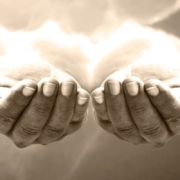On Reconciliation, Building, and Bereishit
Yesterday was the first National Day for Truth and Reconciliation, commemorating the painful and tragic legacy of Indian Residential Schools in Canada. 140 such schools operated between 1831 and 1998. Over that time over 150,000 Indigenous (First Nations, Inuit, and Métis) children were taken from their homes and subjected to systematic erasure of their cultures, languages, and for too many, their lives. It is believed that more than 4000 children died. Among those who survived, many suffered emotional, physical, and sexual abuse at the hands of their “teachers.”
Yesterday honoured the memories of the children who died, the survivors of Indian Residential Schools who carry these scars, their communities, and their families. As I stood on Parliament Hill on unceded Algonquin Anishinaabe territory, listening to the moving testimonies and calls to action of survivors of Indian Residential schools and Indigenous community leaders, I took in the collections of teddy bears and drawings, and hundreds of pairs of shoes — intimate and heartbreaking representations of children and childhoods taken away. Overhead, I kept looking up at the construction cranes and scaffolding flanking the Centre Block of the federal Parliament buildings. Their presence seemed especially fitting.
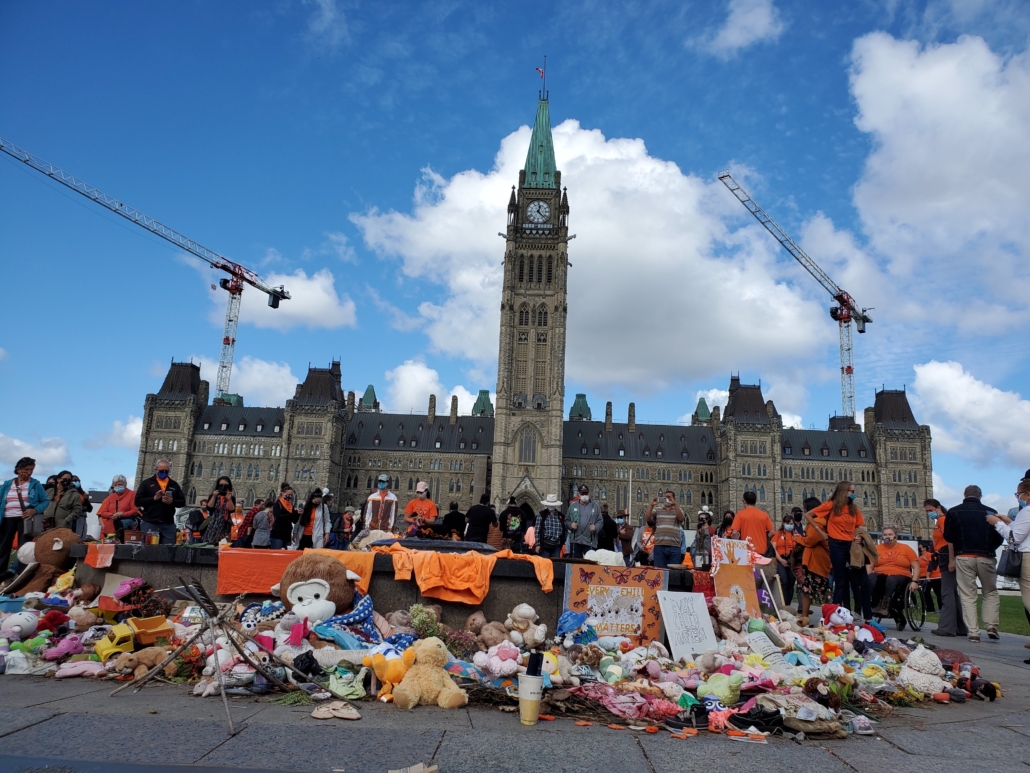
The Centre Block is currently being taken down to the studs, to its very foundation, to be rebuilt for the needs of the future while maintaining its essential elements. Harmful and obsolete materials are being removed from within the building’s stone walls. It is the most significant renovation since the whole of Centre Block (save its Library of Parliament) was rebuilt after burning to the ground in 1916. It will take at least a decade.
True reconciliation in Canada, for the systemic harms and genocide committed and continuing to be committed against Indigenous peoples, will also take time. The very foundations of our country are in need of rebuilding and renewal. Systems — legal, educational, health and more — need to have their obsolete and harmful elements removed so that they can be rebuilt with the promise of the future.
Her Excellency the Right Honourable Mary May Simon, Canada’s first Indigenous Governor General, emphasized the ongoing effort needed to achieve reconciliation:
Reconciliation requires effort every day, and this effort we must carry out for all time, for it has no end date or finish line.
On this National Day for Truth and Reconciliation, I urge you to pause and reflect on Canada’s full history. Do it to honour those Indigenous children who experienced or witnessed cruel injustices. Many emerged traumatized, many still suffer pain.
As we strive to resolve the tensions of the past with the promise of the future, we can stand together and move forward with grace and humility.
Make reconciliation a way of life.
On Parliament Hill, amidst the ceremony and the construction, I reflected on my responsibility to make reconciliation a way of life. My Judaism, particularly the arc of time from the month of Av in the summer through rebirth and renewal in Tishrei, gives me a frame for that.
The most recent events that led to the ceremonies on Parliament Hill were the discoveries of hundreds of unmarked childrens’ graves at various former Indian Residential Schools this past summer. This time corresponded with the months of Av and Elul. Av contains the spiritual low point of the Jewish year. On the 9th of Av we remember the destruction of the Temple, caused by sinat chinam / baseless hatred: the failure of people to see the fundamental holiness in each other. In Elul we focus on teshuvah, literally “returning,” repenting by acknowledging where we have missed the mark and taking concrete steps to correct past wrongs.
The Talmud teaches that the Hebrew letters of the word Elul אלול represent the verse אני לדודי ודודי לי – I am my beloved’s and my beloved is mine (Song of Songs 6:3). At the core of the teshuvah process is a focus on connection and repairing relationships, with each other and with God. Yet before we are able to repair relationships and reconcile differences, we must first acknowledge the truth, the emet, of what caused brokenness or rupture in the first place. Only by facing the truth of what we have done can we embark on a journey of teshuvah, reconciliation and repair.
This year, September 30th coincided with the end of Tishrei: a lived metaphor for how we embed the journey of emet to teshuvah in all aspects of our lives, year to year, cycle to cycle. It also coincided with restarting our Torah cycle with the first parsha, Bereishit, and its fundamental teaching that we are all created in the Divine image — all deserving of respect and love.
As local Algonquin Elder Claudette Commanda emphasized speaking on Parliament Hill, creating space for truth and reconciliation, for emet and teshuvah is ultimately a gift to enable us to heal and grow: “Take this beautiful gift we are offering you; learn, listen and we will walk together to turn this country into a beautiful country for all our children.” Similarly, the Truth and Reconciliation Commission’s 2015 final report calls on us to work together “to transform Canadian society so that our children and grandchildren can live together in dignity, peace, and prosperity on these lands we now share.”
As I looked up at teddy bears and drawings and shoes and cranes and construction on Parliament Hill, all together, I wondered, will Canada rebuild in a way so that Indigenous and non-Indigenous children and grandchildren can live together in dignity, peace and prosperity?
Our Sages taught that while it may not be upon us to complete the work, we are not free to desist from it (Pirkei Avot 2:21). It is aleinu, on us, to make that happen. And every year now, during our season of teshuvah surrounding the High Holidays and on September 30th. we will be able to take stock of our rebuilding and reconciliation together.
Resources:
- Reform Jewish Community of Canada: Reconciliation | RJCC (therjcc.ca)
- NCTR – National Centre for Truth and Reconciliation
- Truth and Reconciliation Commission of Canada Calls to Action (see in particular calls to action #48, 49 and 60 that apply to faith groups)
- Spirit Bear’s youth-friendly guide to the Truth and Reconciliation Commission of Canada (TRC) 94 Calls to Action: child_friendly_calls_to_action_web.pdf (fncaringsociety.com)
- Remember Me – An Annual Day of Remembrance (remember-me-september-30.org)
- Phyllis Webstad Orange Shirt Day Presentation – YouTube
- WELCOME (orangeshirtday.org)
- Final Report of the National Inquiry into Missing and Murdered Indigenous Women and Girls: Final Report | MMIWG (mmiwg-ffada.ca)
- United Nations Declaration on the Rights of Indigenous Peoples | United Nations For Indigenous Peoples
And from work together this past summer with campers at URJ Camp George:
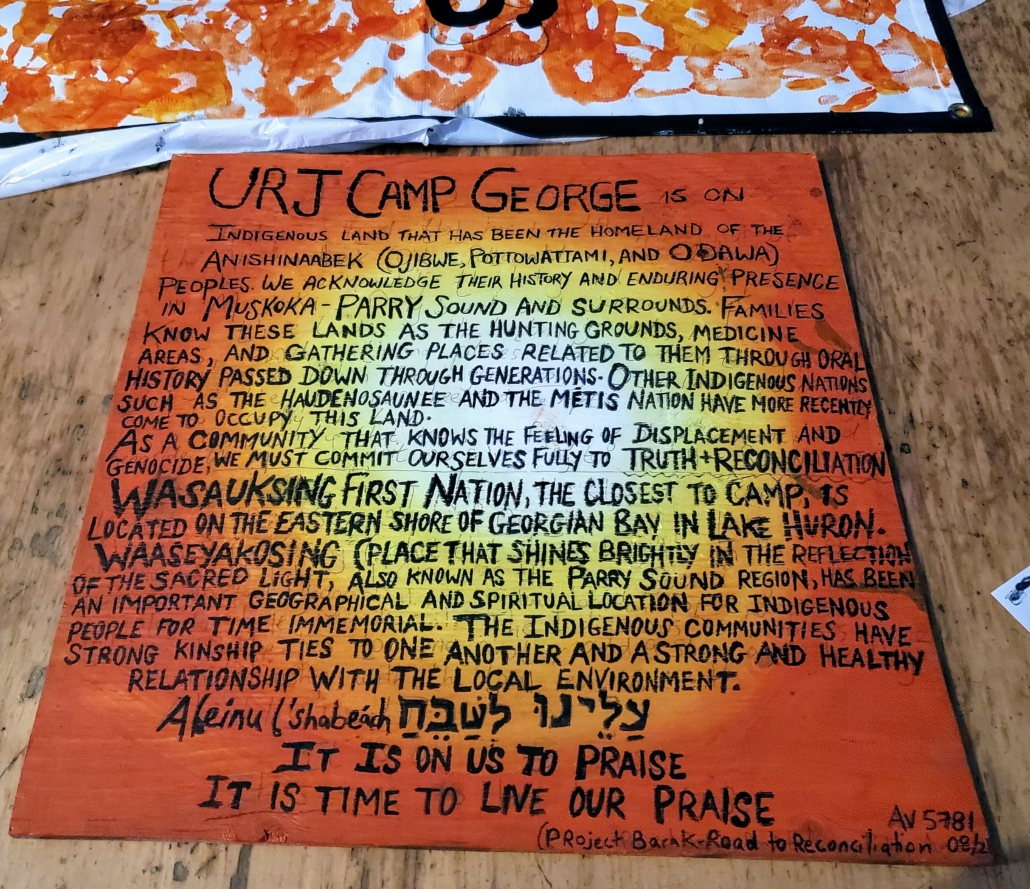
A land acknowledgment created and prepared by teen campers for camp. Inspired by a local indigenous name for the region, the background of the plaque evokes a glowing light.
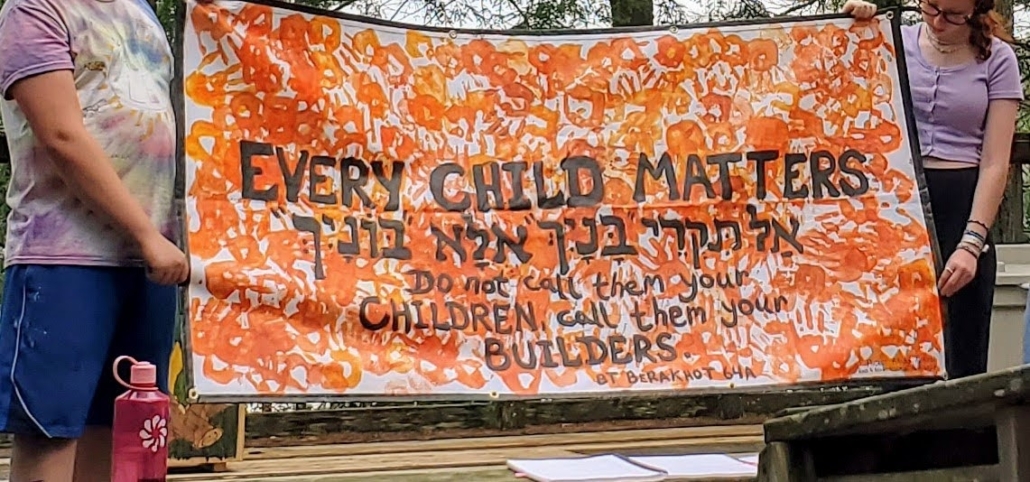
a banner, on a background of orange handprints from all of camp, with the text “Every Child Matters” along with a quite from the Talmud (Berakhot 64a:14)- אַל תִּקְרֵי ״בָּנָיִךְ״ אֶלָּא ״בּוֹנָיִךְ״ – “Don’t call them your children, call them your builders,” which speaks to the fundamental role that our youth play in our present and our future. This quote from Talmud also inspired the name and mission of Bayit: Building Jewish!
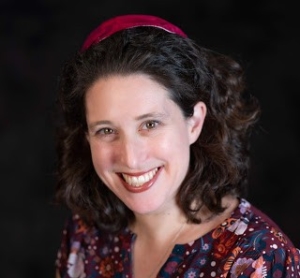
Rabbi Dara Lithwick is on the Board of Bayit: Building Jewish. When not at work as a constitutional and parliamentary affairs lawyer, she is active as an outreach rabbi at Temple Israel Ottawa. Rabbi Dara is also chairing a Canadian Council for Reform Judaism group to develop a Tikkun Olam strategy for Canada and is the Canadian representative to the Union for Reform Judaism’s Commission on Social Action. (Find her whole bio on our Board page.)

